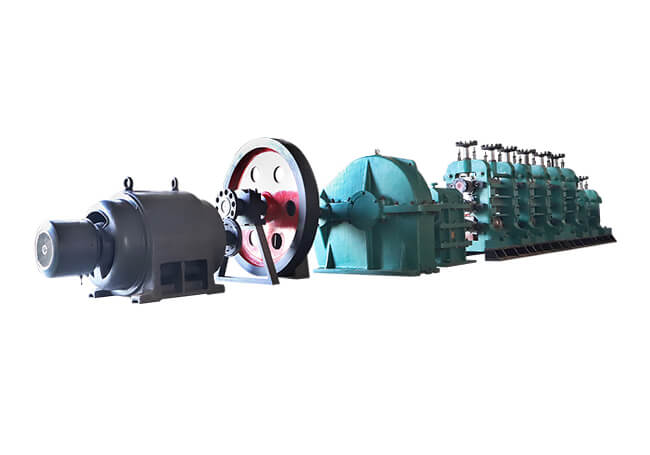Small rolling mills are mainly equipment for the production of construction steel bars. With the development of the construction industry and real estate, the market demand for steel bars has become larger, so the demand for small rolling mills has also become larger.
Many rolling mills on the market today are designed with multiple rolls. After the emergence of the multi-roller mini mill, the volume of the whole mini mill is greatly reduced, which means that the investment cost will also be reduced.
These small mills are designed with direct reduction to meet the rolling requirements of thicker materials, while further ensuring safety. The core components of small rolling mills - rolls, including work rolls and backup rolls, are used for rolling and support, which can improve the shape and straightness of the sheet.
Among them, the lead screw and the nut are the most critical. Small rolling mill screw nuts are used frequently and are prone to wear. In order to ensure the reverse transmission accuracy of the nut and the rigidity of the nut, it is necessary to improve the lubrication and cooling of the nut, and add a dust cover to the nut to achieve the effect of waterproof and ventilation.
In industrial production of multi-roll small rolling mills, the optimized design is also beneficial to the stiffness and hardness of small rolling mills, so as to achieve the rolling precision of materials. The existence of the multi-roll form can reduce the rolling passes of the small rolling mill. How does this improve the production efficiency and reduce the production cost? Everyone said that such a good product will not be favored by people.
When rolling products with a small rolling mill, the rolling lines are alternately arranged horizontally and vertically, enabling all-round twist-free rolling. The billet used is usually a side length of 130-160mm, a length of about 6-12m, and a single weight of 1.5-3 tons.
Depending on the billet size and finished product size, there are different sizes of cold rolling mills to match, such as 18, 20, 22 and 24 small mills.
At present, the bar rolling mainly adopts the process of stepping heating furnace, high-pressure water descaling, low temperature rolling, and endless rolling. Finishing mills mainly improve accuracy and speed, and the product specifications are usually ф10 - 40 mm, but also ф6-32 mm or ф12-50mm.
When a small rolling mill rolls metal, the material deforms due to the force exerted by the rolls on the material. However, this deformation is controllable and can be controlled by setting the parameters of the cold rolling mill.
Once all the adjustments are set, the dimensions of the mill will change accordingly.
Therefore, this issue should be comprehensively considered when designing a small rolling mill. The material also deforms when subjected to an opposing force. In order to obtain the ideal cold rolling effect, the lubricant must be used for adjustment, and a series of requirements are imposed on the lubricant. Only by meeting these requirements can the normal operation of the small rolling mill be ensured.
Welcome to Luoyang Judian to learn more about rolling mills.

Please send us your request and we reply to you with in 24 hours.
Submit Request